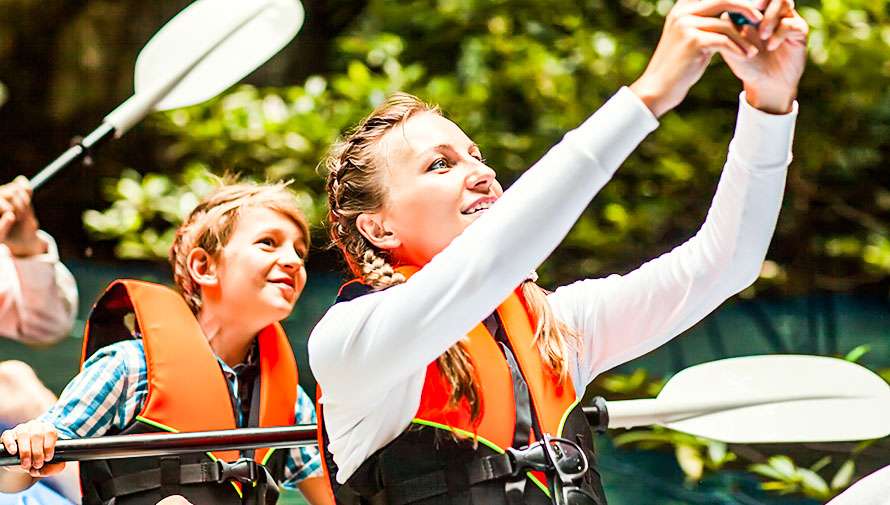The idea of practicing specific paddling skills may not seem exciting. But drilling essential techniques can lead to moving your kayak with precision, confidence and control.
An important element in many instructional programs is the use of buoys, ropes, hula-hoops or other practice devices to help sharpen skills. Buoy work is a staple of precise practice. A single buoy – or a course designed with dozens of buoys – helps paddlers put their boats exactly at the right place at the right time.
One, two, or more buoys, and/or a hula hoop
The following drills using one or more buoys or a hula-hoop are examples of practice techniques that match the paddler’s skill against fixed reference points.
One Buoy
Using a single buoy as a fixed reference point allows you to work on many skills. By turning around it, you can practice such maneuvers as axles, posts, Christies and wedges. Using it as a target, you can work on improving straight-line travel, both forward and backward. Fundamental skills such as U-turns are also easily practiced with the aide of a single buoy. You can also move around the clock. Develop precise control by pointing the bow of the kayak at a single buoy. Then, using draws, sculls and push-aways, move the kayake or kayak around the buoy–always keeping the bow pointed at the buoy. The boat should move like the hand of a clock. The exercise can be made more challenging by pointing the stern toward the buoy.
Two Buoys or More
Placing two buoys two to five boat lengths apart provides the opportunity for maneuvers and straight-line paddling practice in combination. Varying the distance between markers will change the time between turns. Working from buoys relatively far apart toward closer placement encourages you to think more quickly and maneuver faster with greater precision. Two-buoy practice is enhanced by alternating onside with offside turns around the markers.
Adding a rope between the buoys gives more opportunities for fine-tuning. Again, using sculls, push-aways, draws and prys, you can practice moving abeam, either toward or way from the rope. Pointing the bow or the stern toward the rope and using the same strokes helps you practice moving sideways. The rope can also act as a virtual dock, letting you practice landings and stop turns without fear of ramming the shore. Slalom courses are also easy to lay out. Buoys that zigzag or double back on themselves can make for hours of fun, allowing you to spin around the markers paddling forward, in reverse, or alternating.
Hula Hoop?
Another exercise requires suspending a large Hula-hoop from an overhanging tree branch or pole. Place your head in the in the middle of the hula-hoop, and then execute a series of onside and offside pivots keeping your head inside the hoop. The object is to spin the boat smoothly and precisely in place without skid. Many find that spinning to the offside is harder than an onside pivot. In most cases, heeling will help your boat pivot more easily. Try both an onside and an offside boat lean to help develop balance and control.

